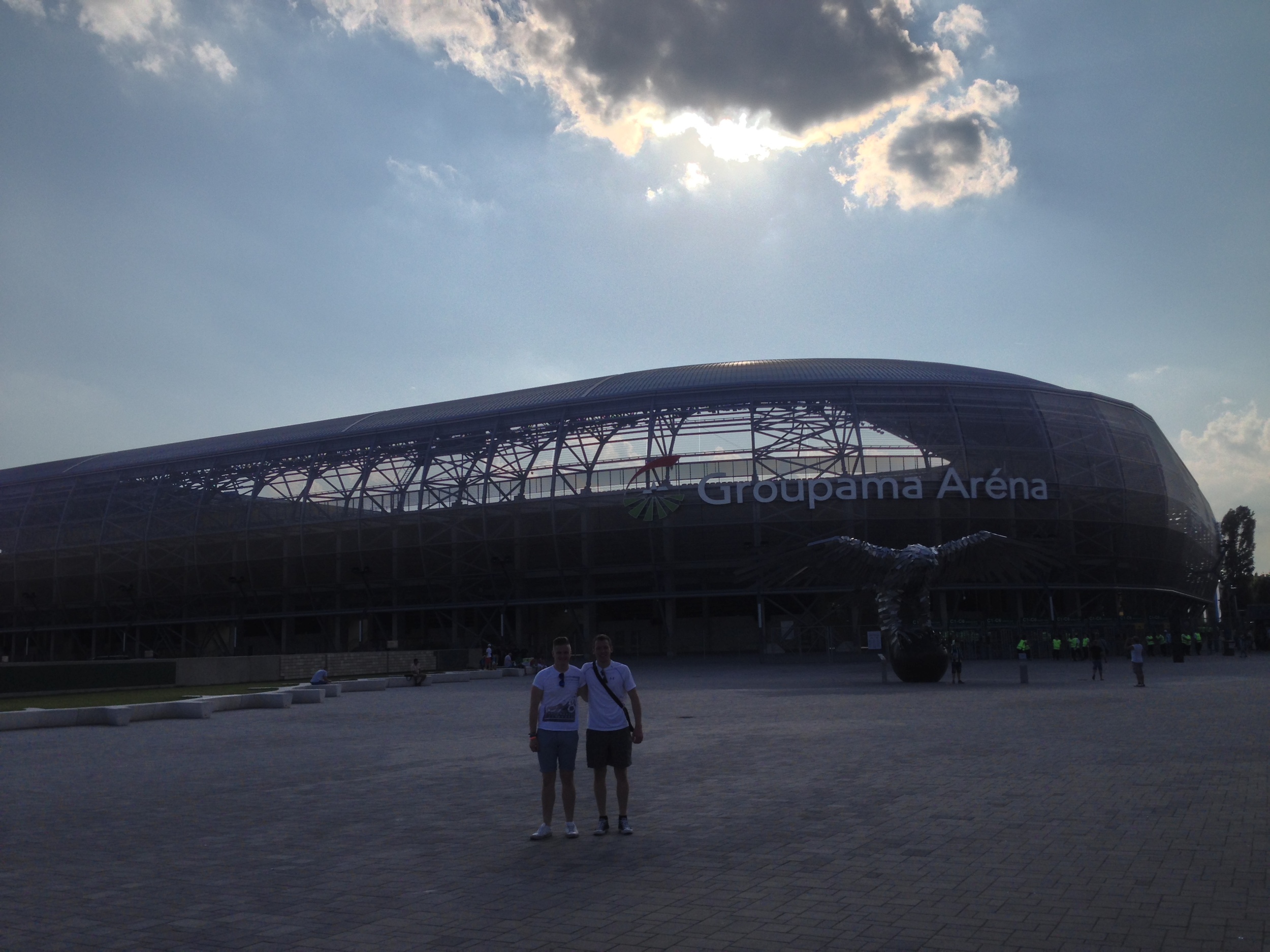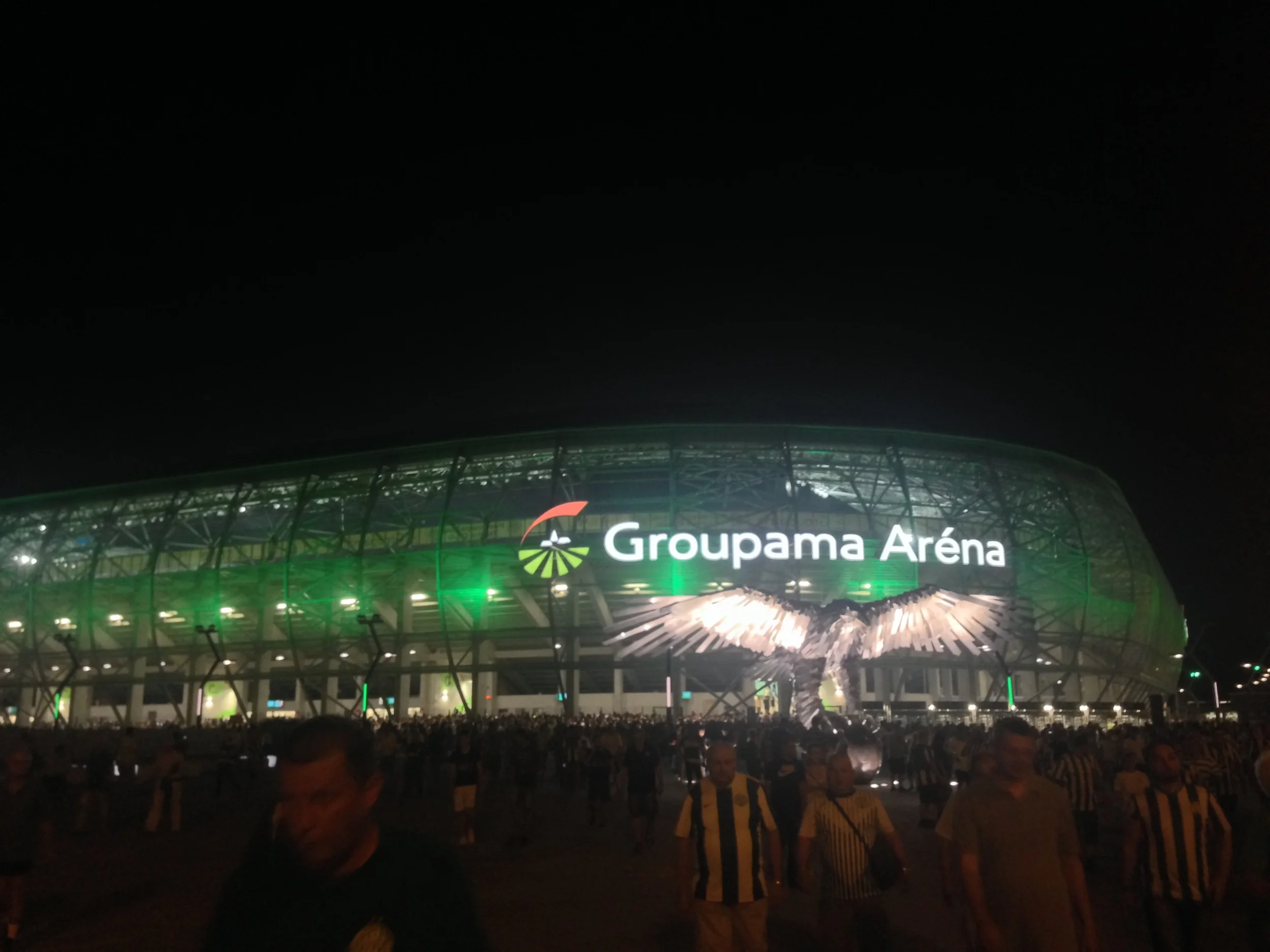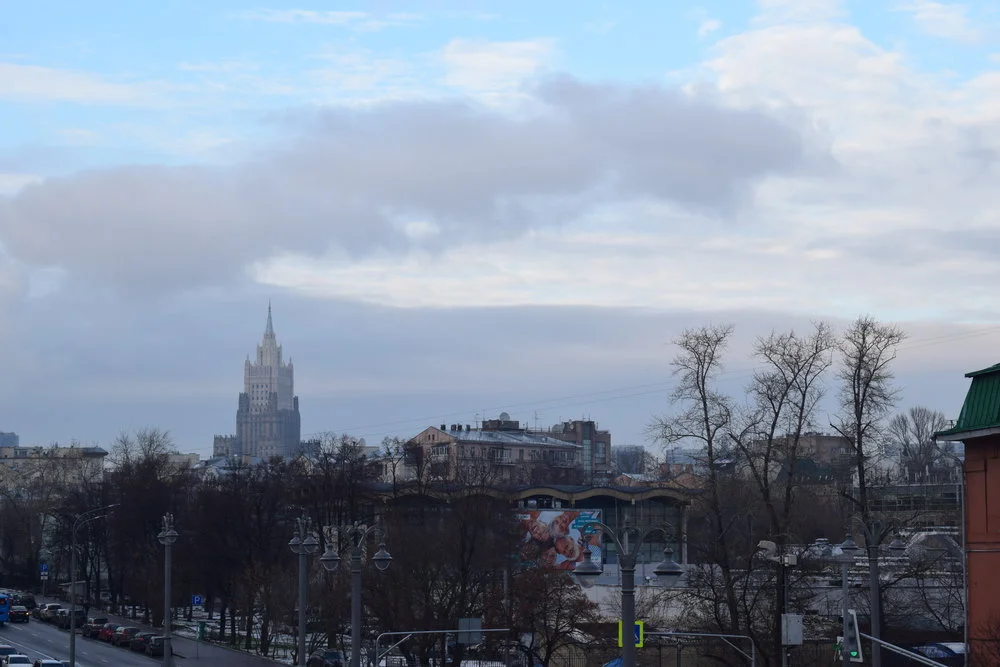Getting a ticket for a Hungarian football match isn’t all that easy
/I often wonder why I love football. As an Everton fan, I’ve never been treated to the ultimate ecstasy of actually winning something.
There have been enjoyable victories that the Toffees have had since I became old enough to appreciate the beautiful game, but never a trophy, not even a smidgen of silverware – absolutely nothing at all.
Yet there is something compelling about not only watching the game, but being part of a crowd on a match day. There’s more to football than just the action on the pitch.
If you read my blog post about my obsession with football stadia last month, then you’ll know that I will, more often than not, make a pilgrimage to the local football team’s stadium whenever I visit somewhere.
This year I’ve visited Józef Pilsudski Stadium and Stadion Miejski in Krakow, the Arriva Stadium in Dublin, the Municipal Stadium in Ayia Napa, Skonto Stadium in Riga, Kadriorg Stadium in Tallinn, and Sonera Stadium and the Olympic Stadium in Helsinki.
Me outside Sonera Stadium, home of HJK Helsinki.
Although I loved each and every visit to those places, one stood out head and shoulders above the rest, and that was Budapest’s Groupama Arena, home to Hungary’s most successful club – Ferencvarosi Torna Club, or simply Ferencvaros.
Why? Because we actually got to see them play.
The path to European competition
Somewhat fortunately, Ferencvaros had qualified for the Europa League – the continent’s secondary football competition – the season before, after earning a first qualifying round berth by finishing runners-up in their domestic league. They also won the Hungarian Cup which also would have secured European qualification.
They entered at the first qualifying round which meant that they first had to win a two-legged tie before progressing to the round of games being played the week of our trip.
After a 1-1 draw in Holland against Go Ahead Eagles, who qualified for the tournament via UEFA’s fair play league, they won the return fixture at home 4-1.
A draw against Bosnia and Herzegovina’s FK Zeljeznicar Sarajevo, with the home tie to be played first, happened to coincide with our trip and, of course, I set about further research.
Before the game
I knew that the game was on Thursday 16 July, which was right in the middle of our trip meaning we didn’t have any time constraints.
Despite that, I ended up finding out that it was best to get to the game early, because of the situation with fan cards – which each attendee is required to get before they can purchase a ticket.
The service isn’t available online, but I was assured that they would be available on the day, and the game was unlikely to be a sell-out.
Getting there and buying a ticket
Outside Ferencvaros' Groupama Arena in Buapest, Hungary.
The Groupama Arena is a state-of-the-art footballing facility, and was opened in 2014, with Ferencvaros hosting an exhibition game against Chelsea which they lost 2-1.
It’s just on the outskirts of Budapest, and so is easily accessible by the city’s Metro train service, and cheap, too!
Once we got there we got some photos and had a quick look around, but I wanted to make sure that we got our tickets and hurried the group to the box office. Thankfully, it was the right decision.
Our first task was to each fill out a form with our personal information. The only problem was is that everything was in Hungarian. Literally everything.
However, we were lucky enough to be standing right by an English and Hungarian speaking citizen, and he was able to translate everything for us.
In fact, we thought he was joking when he revealed that we had to put down information such as our Mothers’ maiden names and numbers from our identification cards, but we did.
We eventually were able to get out of the sun after completing the forms, and were led into the office, where the next stage of getting a fan card began.
This was literally a foreign concept to us, but if we wanted to see the game that evening, it was something that needed to be done.
It was there we had our pictures taken and what I thought were our fingerprints taken. Though upon further research, our hands had been biometrically scanned.
We were also made to hand over a form of ID and proof of address each, and it’s lucky that we all had our drivers’ or provisional licences on us, which doubles up as both.
Once our cards were finally printed and completed, we were able to purchase tickets and enter the ground (where we received complimentary matchday programmes which was a nice touch), after another round of scanning to make sure we matched up with their new database entries.
The video below shows the process, although I should forewarn you that the video is in Hungarian.
Biosec
A supporter gaining entry to Groupama Arena. His left hand is scanned, while he uses his other to insert his fan card into the slot. The data from both must match in order for the fan to get access. Image credit: Hungarian Ultras blog
Hungarian football fans and, particularly, those of Ferencvaros have been considered amongst the most violent in recent times.
So as a way to clamp down on hooliganism and be able to identify fans with a greater success rate, the club introduced a new Hungarian invention alongside Fradi’s new $61 million football stadium.
Biosec Kft are the masterminds behind the hand scanners, which identify a supporter based on five million palm vein data points – pretty complex machinery in the fight against football-related fan violence.
There are other motives to introducing these new measures, though. One is the decline in attendance figures in Hungarian football, and a hope that increasing security will lead to a safer environment for fans and, therefore, an increase in numbers.
The Hungarian football association have even gone as far as to introduce a fan card system for each and every one of their professional teams, though Ferencvaros remain the only one to subject their physical fan base to a biometrically-influenced application process.
Biosec Managing Director, Peter Gyorgydeak explained their use to news corporation Reuters.
“Biometric identification systems are already in use in the soccer world. But it takes five seconds for the face recognition system used in the stadium of Sutch club ADO Den Haag to identify someone, which may be too long,” Gyorgydeak said.
“Here you hold your palm there and you are identified in a second.”
But is everyone okay with it?
After doing some reading around the subject, it appears far from it. In fact the new protocol has already caused a protest gathering, as well as a boycott of the most fiercest rivalry in the country, when fans of Ferencvaros decided not to attend an away fixture against neighbours MTK Budapest last season.
A spokesman for the Fans With No Personal Right Movement, Balazs Magyar, told Reuters: “What is this madness? Will they implant a chip into us the next time?
“New stadium, new fans? This will not work.”
Blogger and MTK fan Timmy Basci says he can no longer attend games because, being a foreign passport holder, he is exempt from the fan card system.
He believes that the fan card has “single-handedly turned existing fans away from the game and stop new fans coming to the game”, and described the process as using a “sledgehammer to crack a nut.”
Though it now appears that those particular creases have been ironed out, as we were still able to attend the game.
Football fans can be a fickle bunch, and it can become difficult to put their affinity with the club to one side for very long – even if it is for something they’re protesting against.
Getting a photo inside the arena prior to kick-off.
Full time: Ferencvaros TC 0-1 FK Zeljeznicar Sarajevo
Highlights of Ferencvaros 0-1 Zeljeznicar Sarajevo from the second round of qualifying for the 2015/16 UEFA Europa League. Video courtesy of 1921.tv's YouTube channel, which I assume is a Zeljeznicar supporters' association.
In all fairness, the match was a bit dull. It was a stalemate up until the 90th minute when Sarajevo’s Denis Beganovic turned home a loose ball to send the visitors away with their nose in front in the tie.
I guess I was just grateful for a goal, and it was pleasing to see the celebrations in the away end by the Sarajevo ultras, which was worth paying the money for all by itself.
There were some chances throughout the game, but Ferencvaros just couldn’t find the goal, and came closest through Roland Lamah’s effort, which flew off the base of the post.
It was slightly disappointing that Ferencvaros didn’t win, but it was nice to see a goal, and good to watch a game of football before heading off on a night out.
Leaving the stadium to head back to the city after the game had finished. At night the arena lights up green, which is Ferencvaros' colour.
But the team haven’t done badly since. They currently sit top of the Hungarian first division 19 points clear of second place after winning all but two of their 18 league games this season, and are currently still in both domestic cup competitions.
It was one of my best travel experiences to date, and I can’t wait to get back in the foreign footballing saddle in April, when me and my mates will be going to see Internazionale against Napoli.





















Here's the information you need to know if you plan on watching Wisla Krakow at Stadion Miejski.